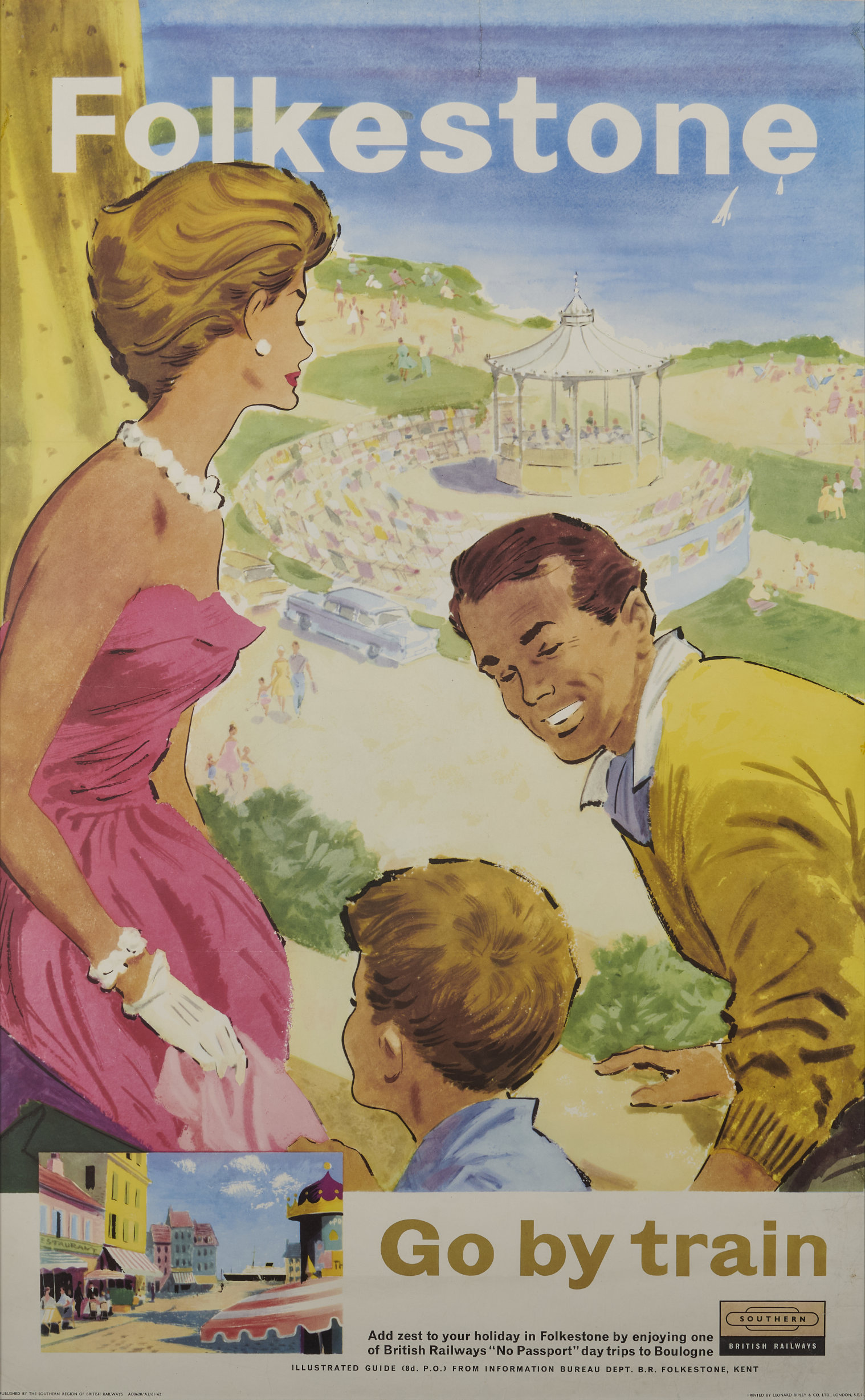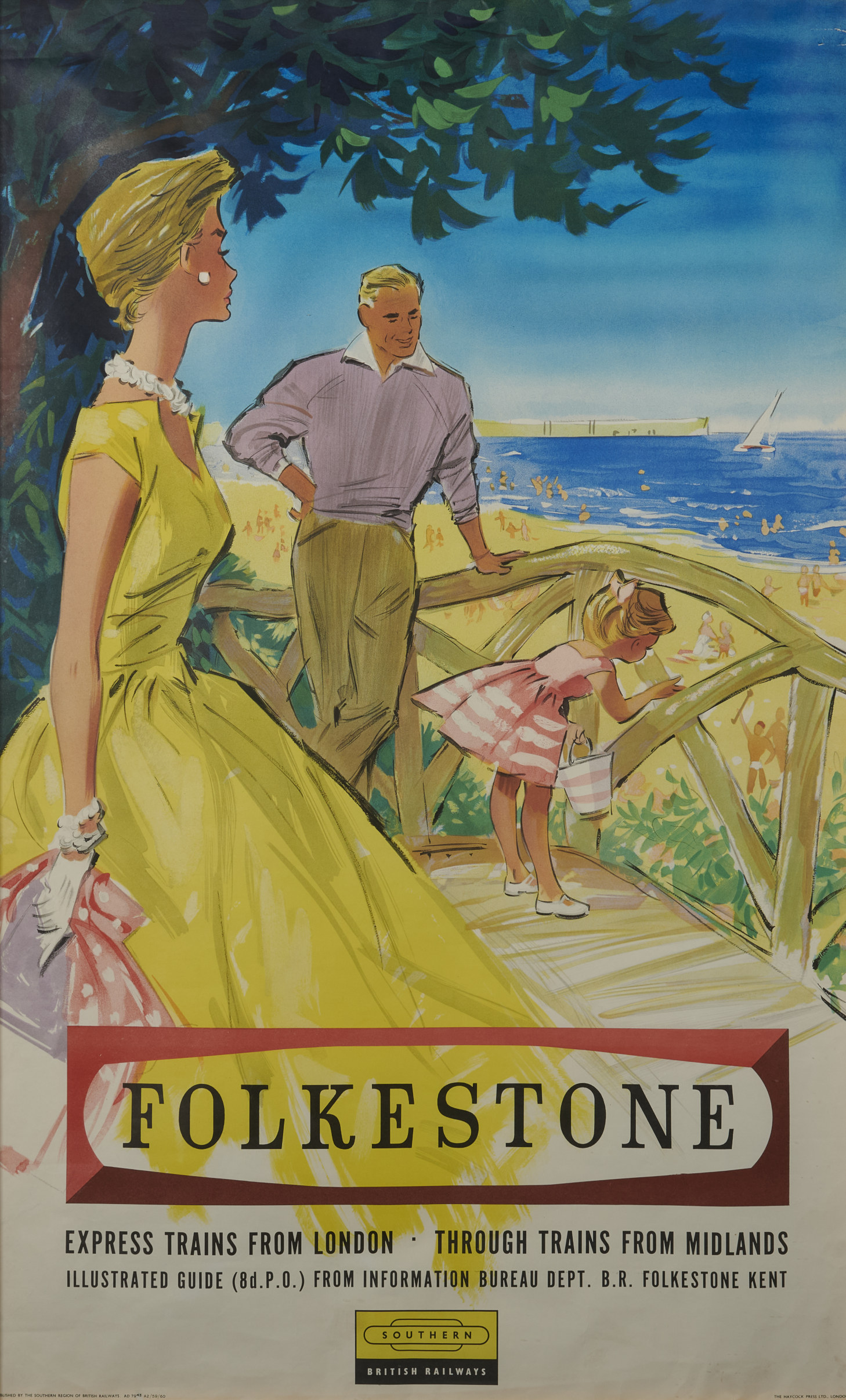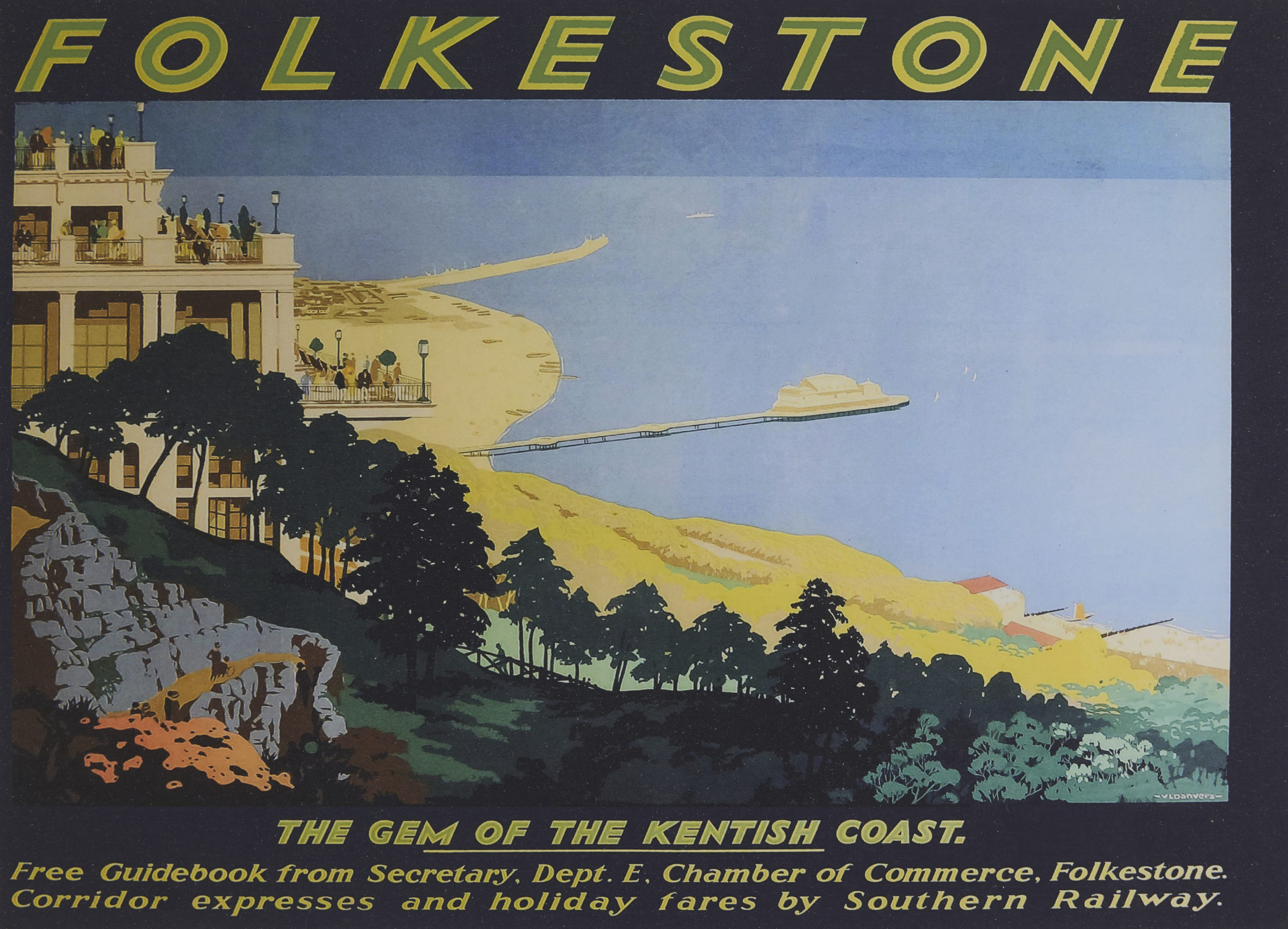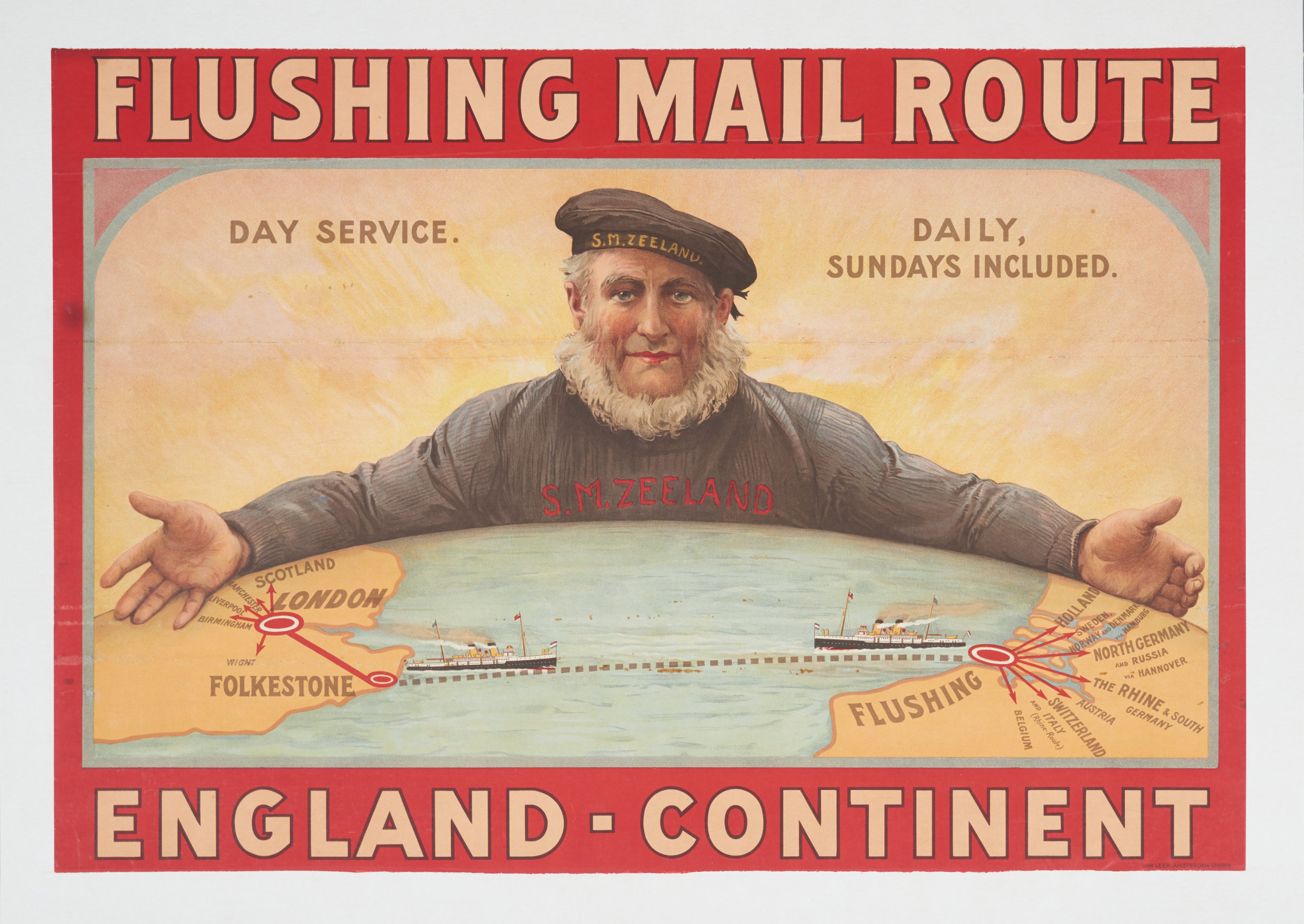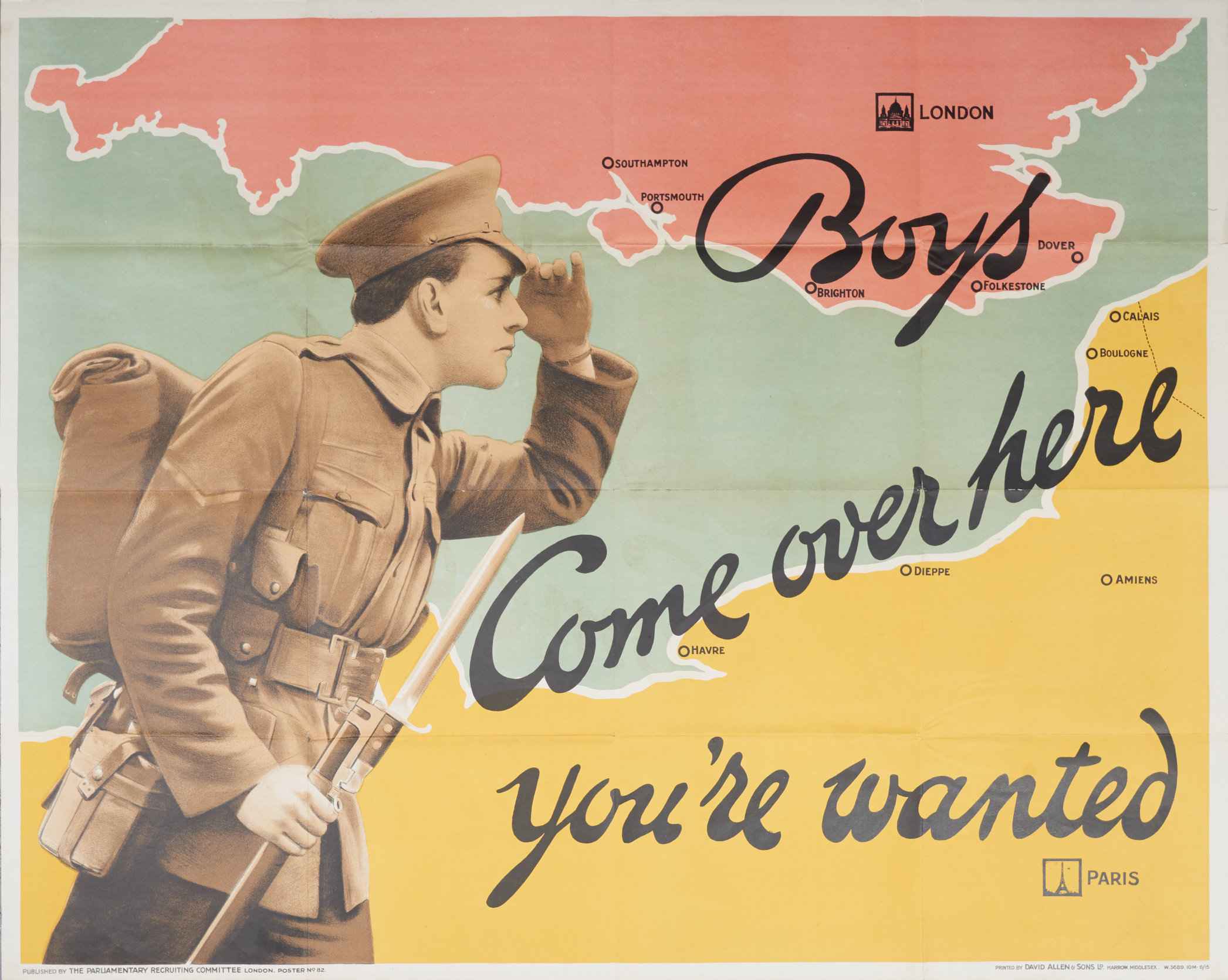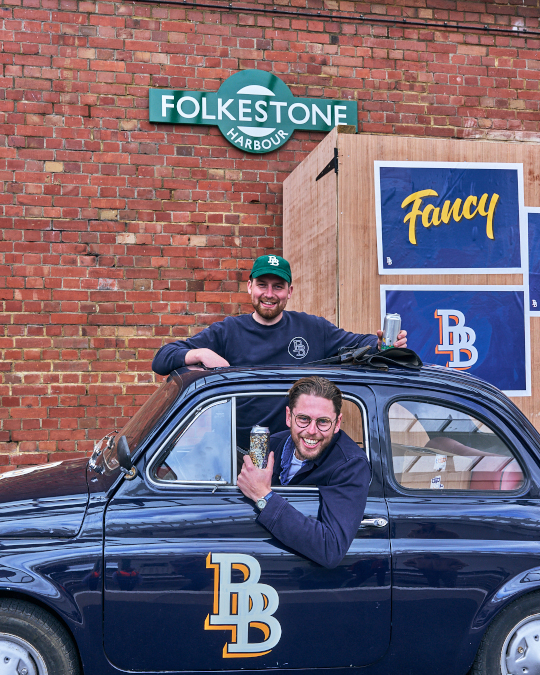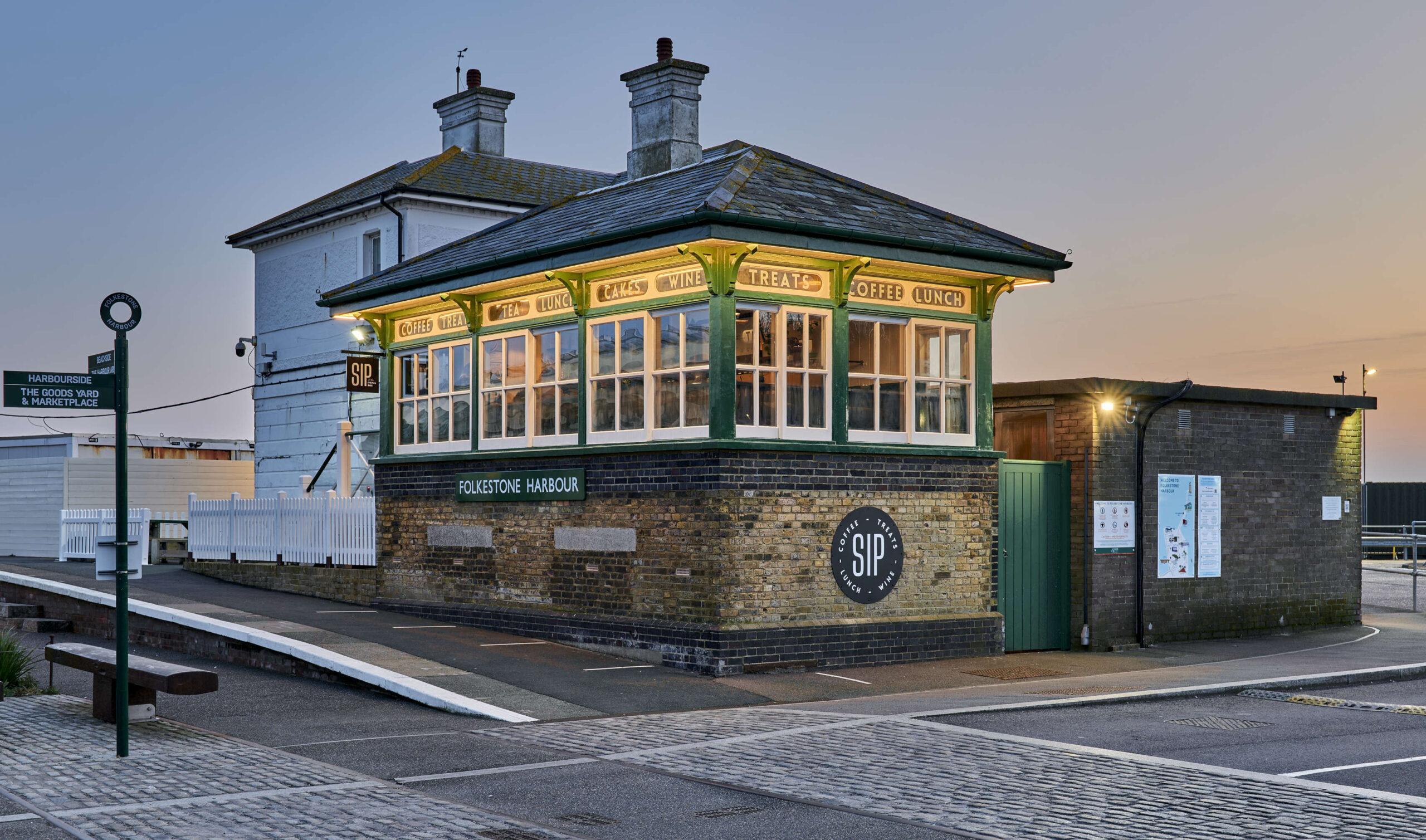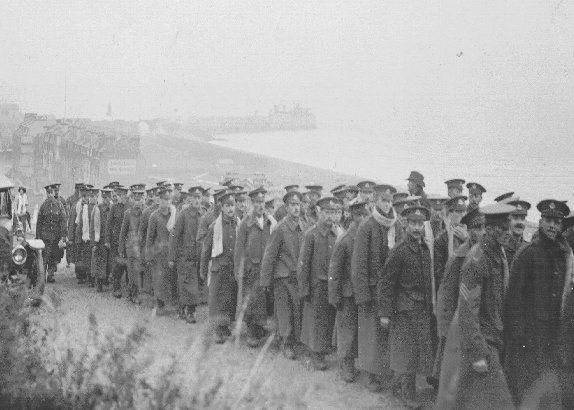Events
folkestone posters 2025 – exhibition
Over the summer of 2025 there will be an exhibition of travel posters at Folkestone Harbour Station. These are owned by Sir Roger De Haan and have been collected by Paul Rennie, the curator of this exhibition. He’s been collecting them since the early 1980s. Folkelife met with him to find out more about what’s on show.
“I’ve always loved posters, and was surprised that they’re not that expensive, considering how beautiful they are and how difficult they are to find. I have a particular interest in posters that mention Folkestone, having lived here with my wife since 1989. We came here by accident, and never thought we’d still be here now!”
folkestone in pictures
“There are many posters that are related to the town; some are obviously resort posters, others are service posters for the railways – both towards London and the Continent, and others still are related to the First World War.
“We’ve had a lot of fun finding posters for Sir Roger, and most of the posters in the show are his.”
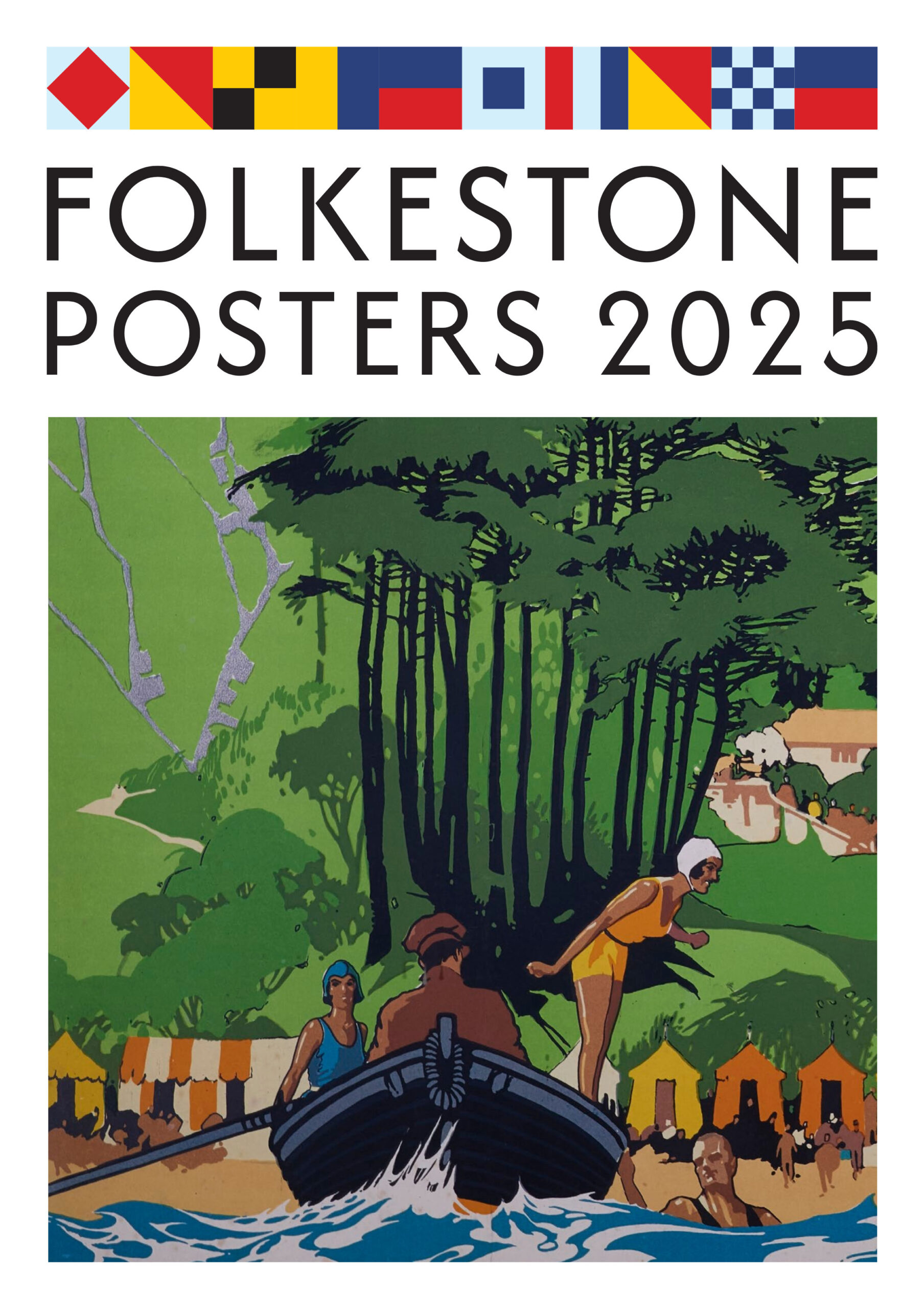
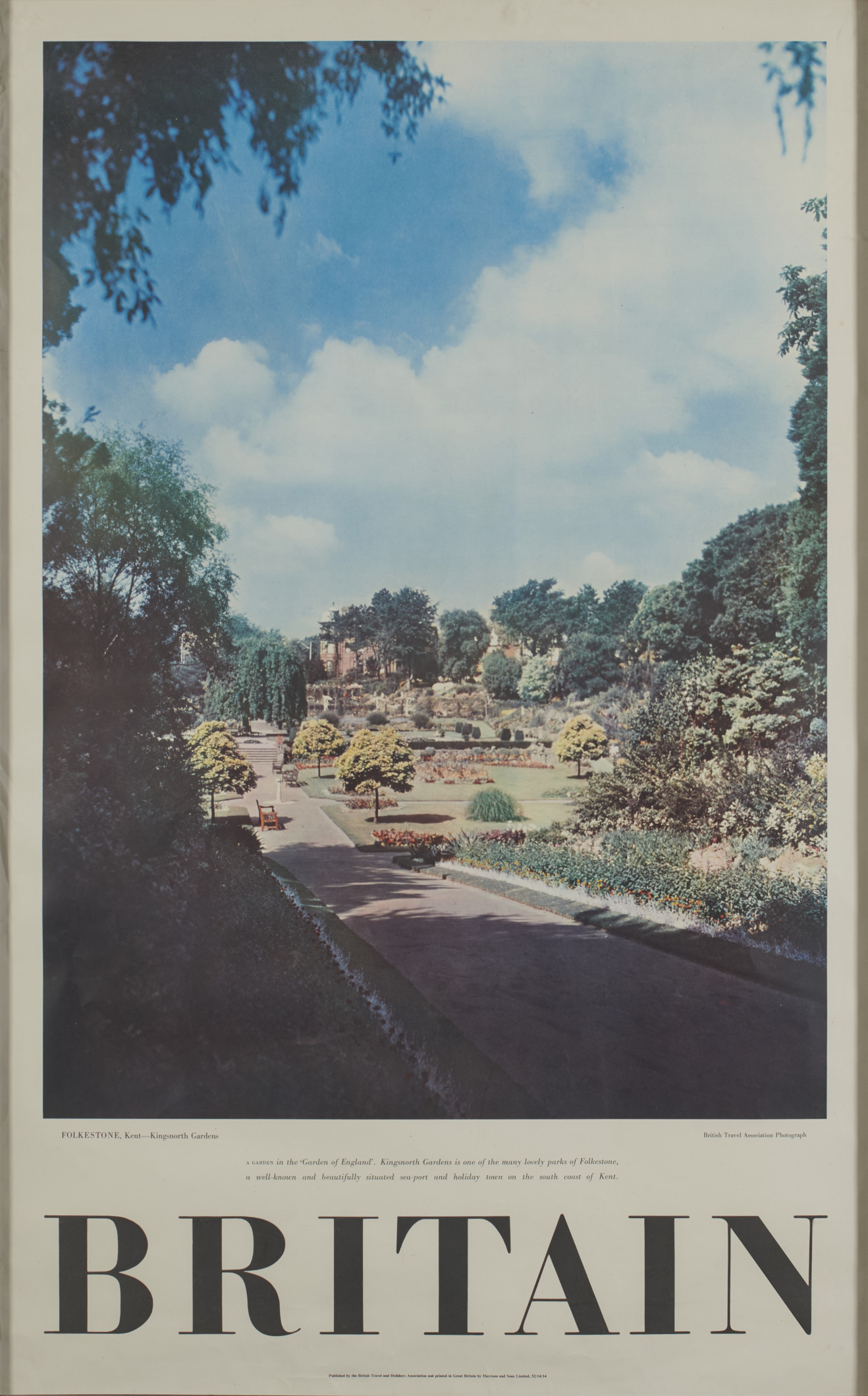

the golden age of posters
“We have some posters that date back to before World War I, and then there are some from 1914-1918, but most of them date from the period we call the Golden Age Of Posters, 1920 to around 1960.
“The resort posters are interesting because they were a collaboration between the resort folks that paid the costs of production, the railway company that provided the service back and forth, the printers who printed them beautifully, and the artists who designed them beautifully. And in a way, it wasn’t an entirely commercial relationship.
“Everyone contributed more than they needed to, to make something really fantastic. And they did look amazing. They’re an early example of art beyond the gallery, which has been what the Folkestone Triennials are all about.”
seaside marketing
“For the English, seaside towns emerged as a therapeutic environment at the end of the 18th century. In the 19th century, there was a huge expansion because of the railway network, and it was the railway companies that really made the seaside towns happen. And of course, they advertised seaside resorts as the end of their destinations, at the end of their lines.
“The railway platforms became a kind of art gallery of different places. Every seaside town in Britain has its own class position. You can see that around Kent, but Folkestone, Broadstairs, Margate and Ramsgate are all slightly different. They’ve all got their own very specific way of marketing.”
secret trysts
“It makes sense for the railway companies to advertise the last destination on the route, as then people buy the more expensive tickets. But don’t forget about the luxury train travel that brought visitors to Folkestone for their onward journey to the Continent.
“Here you had the exclusive passage from train to quayside, moving from train carriage to steam ship totally undercover. It was very discrete, and an attractive way to take partners and friends across to France.”
gateway to the continent
“Folkestone was a gateway to the continent, but also to London as well. It’s interesting, the railway made Folkestone the destination town it was in the 1900s, and without it Folkestone would never have been more than a sleepy fishing village.
“But the railway was also instrumental in Folkestone’s downturn at the end of that century. With the coming of the Channel Tunnel, it put paid to the ferry services from the Harbour. The boat-train service ceased and the town was in a bit of hiatus for a while. Then, again, thanks to the railway and the regeneration work, the High Speed link to London has helped revitalised the town.”
favourite posters
“I can’t choose a favourite, it always seems to be the last poster I have looked at. They are all beautiful and exciting in different ways. The posters are a thing of fantasy, a lot of them are not a photograph, they’re an evocation of the place in relation to its most attractive facilities. The posters from the 1920s show this golden age where the boat train can be hauled up the line to Folkestone Junction by three engines, that would have been expensive.
“Then by the 1940s things don’t look very bright. Folkestone was at the front line as part of the south coast, and the whole area became a military zone. You could still see it when we arrived here in the 1980s; along the beach, which was quite narrow, there were bits of concrete everywhere. It didn’t look attractive.”
demise of the seaside town
“I think when people talk about the demise of the seaside town, they blame cheap flights to warmer climates as one of the main reasons. Yet the seaside environment wasn’t very appealing. It was the last bit of our country to be addressed and tidied up after the war.
“But Folkestone’s fortunes have waxed and waned over the past few centuries. In the 1960s, the posters are photographs of real people enjoying the town. There’s an old salt tying knots and mending nets with kids playing in the Harbour. It was indicative of the experiences they were ‘selling’.
“Folkestone reinvents itself in the age of the motor-car as people drive down to use the roll-on, roll-off ferry. But it did take a while for Folkestone to catch on to the new cliental. Once the holiday destination of retirees, it’s now become a family-friendly town that facilitates people working-from-home. One of the town’s characteristics that was its biggest problem, has now become its biggest asset – the coastline.”
growing the town
“The coastline has always been a barrier to the town getting any bigger, and the M20 forms another barrier at the other end. What stops the town getting a larger population actually makes our environment here incredibly attractive. The Harbour provides a theatre of things happening in the town, which invites those who can invest and spend their money in the whole town.
“In the 1950s, the town made a great effort to attract visitors. The posters in this period feature a couple, a man and a woman, who then appear in other posters too. Sometimes they’re a young married couple, and in another they are a family with a child playing on The Leas. You can see the car parked in full view, so that was part of the attraction. Drive to Folkestone.”
pixalated images
“The transition from paintings to photographs in these posters happens around the time there’s a breakthrough in printing techniques. In the 1960s and 70s it becomes possible to print enlarged photos and still retain their quality.
“The link between every era is that Folkestone is a gateway to something new. I tell people it’s a bit like California, you reach the coast and look out towards the horizon and the possibilities are endless, exciting and ours for the taking.”
The Folkestone Poster 2025 Exhibition opens at the end of July for the summer and early autumn.

